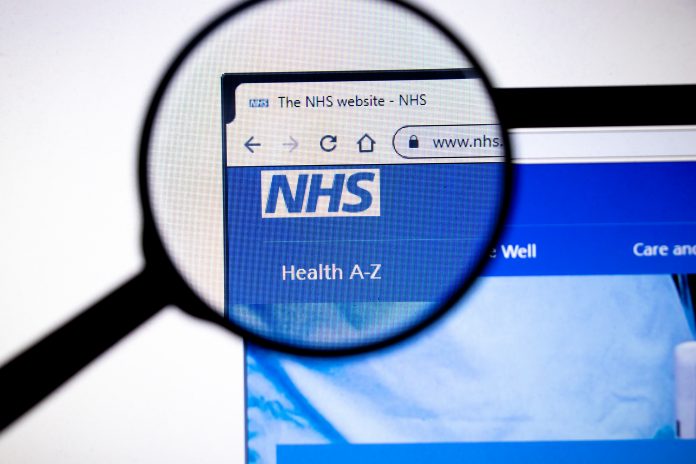Justin Hall, GM and VP EMEA, iRhythm Technologies, explores the impact that COVID-19 has had on the rapid scaling of new technology-enabled healthcare services
The last few months have propelled the UK healthcare industry into the spotlight like never before. Alongside GPs and nurses, manufacturers, researchers – and many other medical professionals – have formed a new front line. With millions of us relying on these individuals to keep the country running in the midst of the evolving global pandemic, concerns around limited resources and inefficient equipment have grown.
However, whilst this period is set to be referred to as one of the toughest health emergencies in history, it has also brought about long-awaited change. In order to ensure that non-COVID related services continue and patients are still able to access potentially life-saving treatment and care, the industry has had no choice but to adapt. By adopting new models and practices, medical professionals have been able to continue to support patients, without increasing strain on their already stretched resources. The crisis has acted as a key, unlocking a door to innovation that had previously been closed for a very long time.
Whilst, the healthcare industry’s ability to readjust and modernise quickly during this period of disruption has been admirable, it is something that we must ensure remains post-pandemic. Moving forward, it is critical that we continue to embrace innovation, trial new technologies and practice new ways of working. Only then can we confidently say that we are better preparing our health service and its workers for the future.
Shifting to survival mode
When COVID-19 struck, it forced the entire healthcare system to be creative in its response. Standard primary care models were swiftly replaced by more agile, efficient methods and practices. Meanwhile, many providers of healthcare services and technologies had to adapt their offerings to make them more accessible to the general public, who were being encouraged to stay at home. Despite the virus hitting suddenly and many of these new fulfilment models, therefore, being established at incredibly short notice, they have suddenly become an essential part of delivering care to those in need.
For example, the adoption of telemedicine has increased drastically during this period, with many GPs and practitioners shifting to video consultations and virtual clinics in order to continue diagnosing and treating patients. In fact, during the virus’s peak, it was estimated that only 7- 8% of consultations were being carried out face-to-face, as the majority of surgeries closed in an effort to limit the transmission of the disease.
The benefits of fewer in-person visits are already being widely seen by those across the industry, with medical teams able to significantly reduce the amount of time and administration associated with each appointment, without having to compromise on the level of care given. This is already playing a key role in dealing with the mounting backlog of patients to see as non-essential healthcare services start to resume following COVID-19’s peak. So much so, in fact, that in recent weeks, Health Secretary Matt Hancock has even predicted that remote appointments will continue once the COVID-19 pandemic passes.
But, it’s not just those directly treating patients that have had to adapt to the current climate. Providers of healthcare solutions and technologies have also had to change the way that they deliver their services and devices, following the redeployment of health centres and reallocation of resources. For some, this has meant launching direct to patient shipping models – enabling those who are most vulnerable to still access the care that they need without leaving their homes. These models have proven to be very successful, keeping both patients and practitioners safe, while also reducing some of the strain being placed on other healthcare resources.
Start as we mean to go on
Traditionally within the NHS, the promise of innovation has rarely come to fruition. Even when modern technologies are reaching the break-through stage, adoption and evolution is slow, problematic and confusing. This has unsurprisingly led to the opinion that there are more crucial problems for the NHS to try and tackle. Digitalisation is a nice to have; staff retention, A&E wait times, and access to care are fundamental.
However, during COVID-19 ‘access to care’ became almost wholly digital. As a result, more importance was placed on modern technologies than ever before. Healthcare professionals and health tech providers were forced to be creative, reimagining long-established ways of delivering their services. This has driven a surge in innovation and is something we must encourage once the crisis is over.
In order to ensure that the adoption of modern technologies and new ways of working are both successful and widespread, we will need to make sure that they are embraced by those who utilise them every day. If digital plans are to succeed post-COVID-19, personal and professional buy-in from medical professionals will be essential. Getting everyone on board will likely entail a certain level of upskilling and digital training. The NHS’s workforce will need to feel supported both now, and in the future, if innovation is to continue post-pandemic.
Moving forward, we must make ongoing investments in our healthcare service. After all, when the virus hit, it was our primary form of defence. Those on the front line – GPs, nurses and other healthcare professionals – worked with those behind the scenes – health tech providers – in order to keep us all safe. By embracing modern ways of thinking, this united front enabled us to fight the effects of the virus, whilst ensuring that other areas of care continued as normal.
Although the devastation caused by COVID-19 is undeniable, it has opened many doors and ushered in a new way of thinking about the delivery of healthcare services. Now that the door to innovation is open, we must ensure that it remains so. It is only then we will be able to build a healthcare system that is future-proof.











